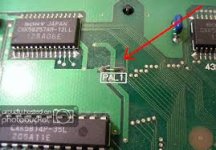- Joined
- Oct 4, 2011
- Posts
- 341
Alright after searching the forums and finding a few threads on this, and reading them, Im still incredibly confused. Everybody seemed to have tons of different answers instead of a straightforward; A, B, and C must be done and youre good.
What EXACTLY does it take to convert a PAL AES to play NTSC, like an OG American system would have. 60hz, NTSC etc. I do plan on using RGB scart cables the majority of the time, if that makes any difference.
Some peeps were talking about adding a different crystal to get a different Hz rate, and yet others were straightup "I cut a jumper and I'm gucci"
So what gives?
What EXACTLY does it take to convert a PAL AES to play NTSC, like an OG American system would have. 60hz, NTSC etc. I do plan on using RGB scart cables the majority of the time, if that makes any difference.
Some peeps were talking about adding a different crystal to get a different Hz rate, and yet others were straightup "I cut a jumper and I'm gucci"
So what gives?


